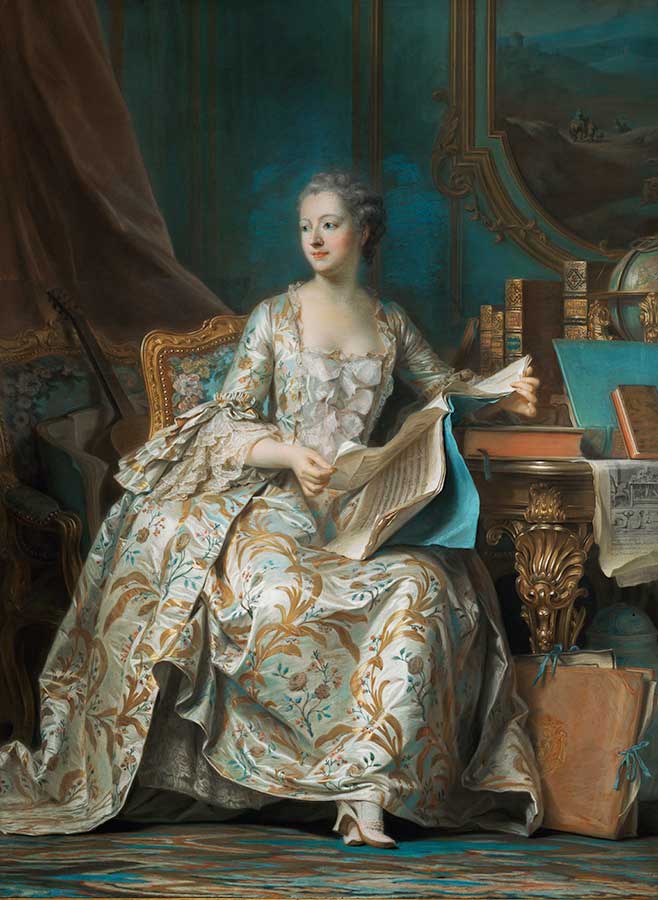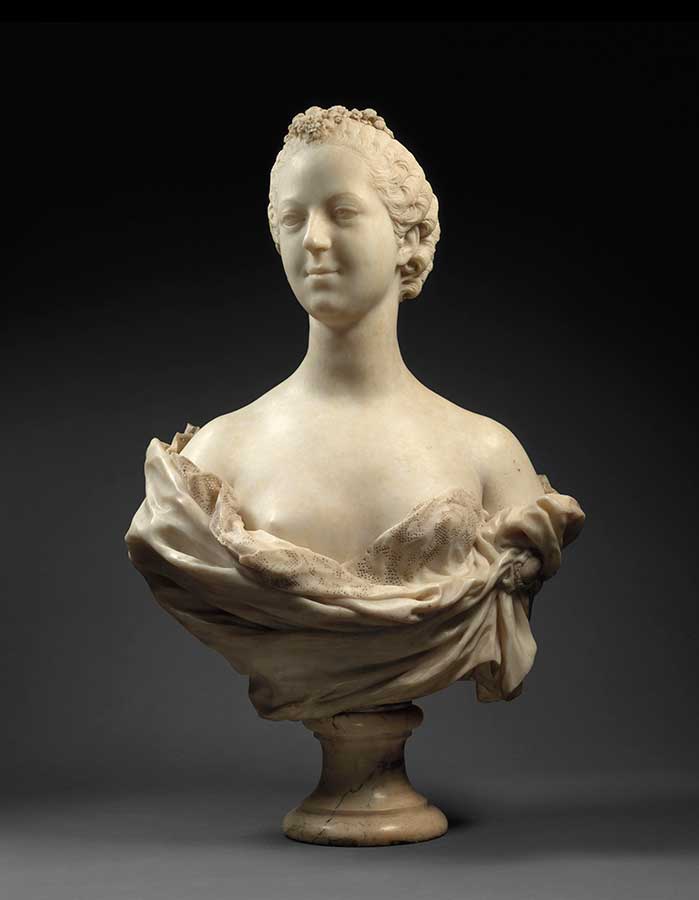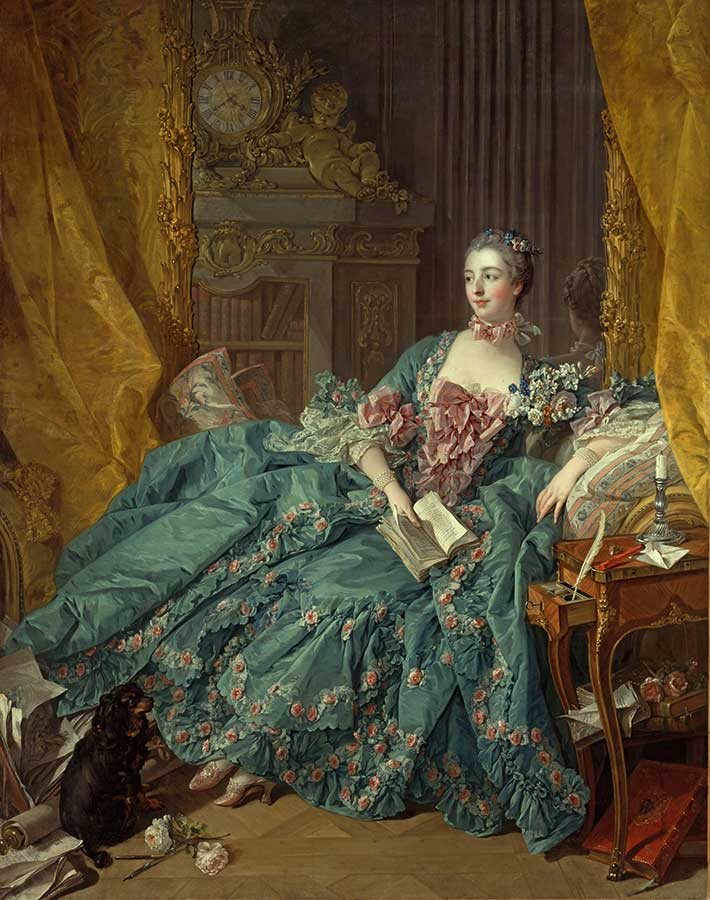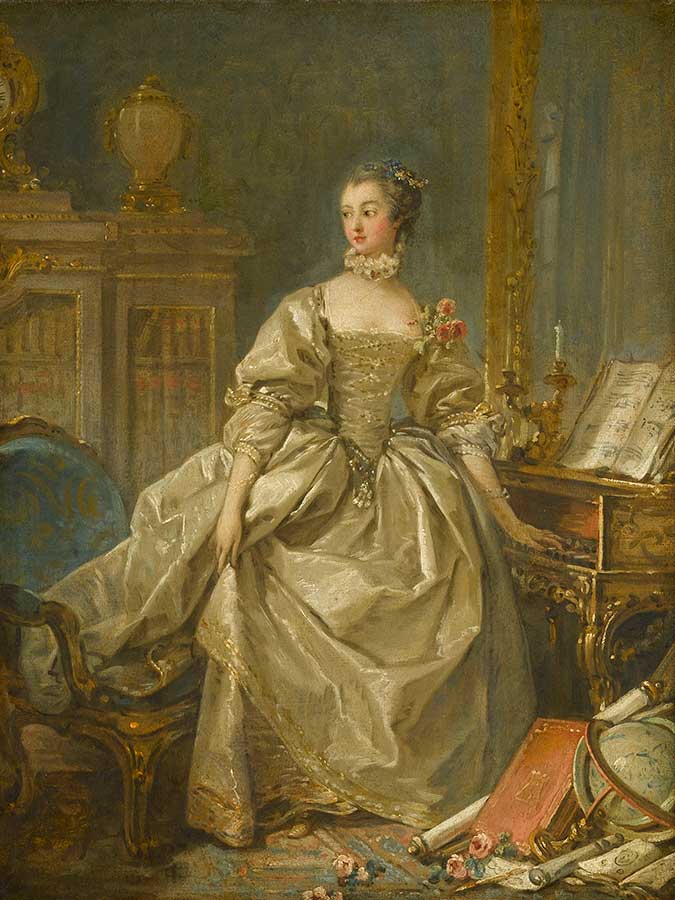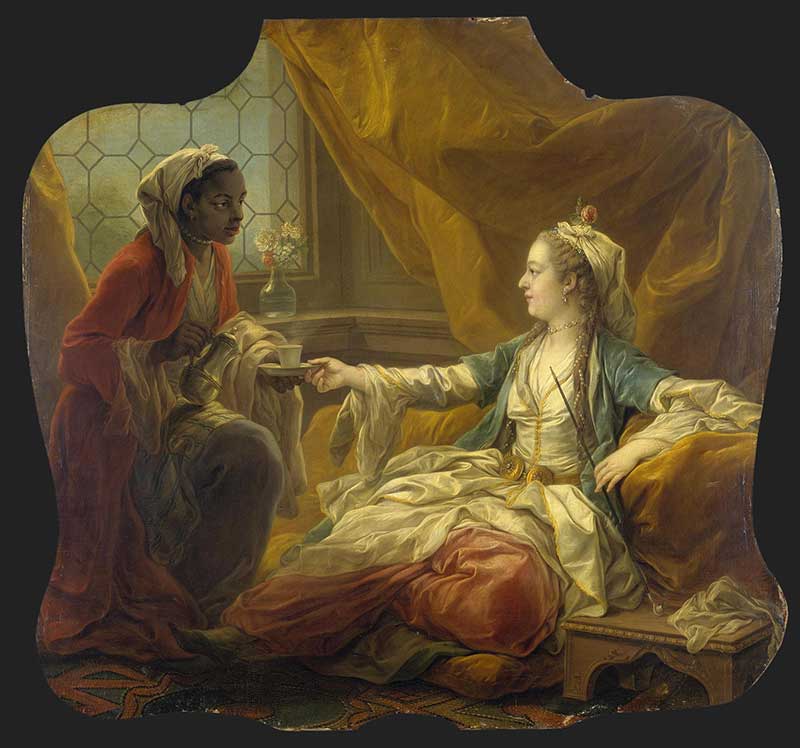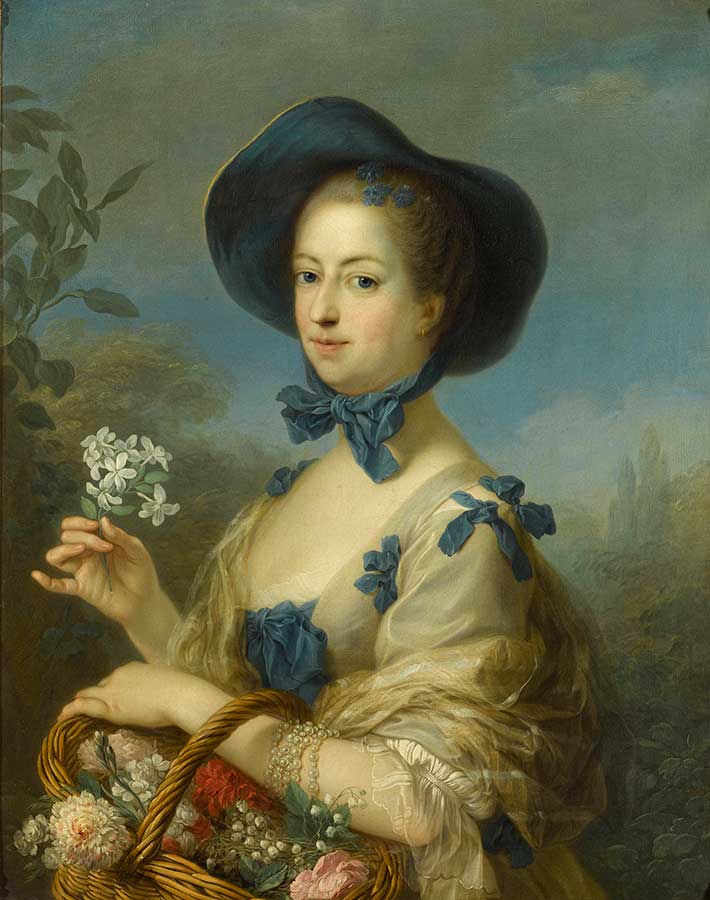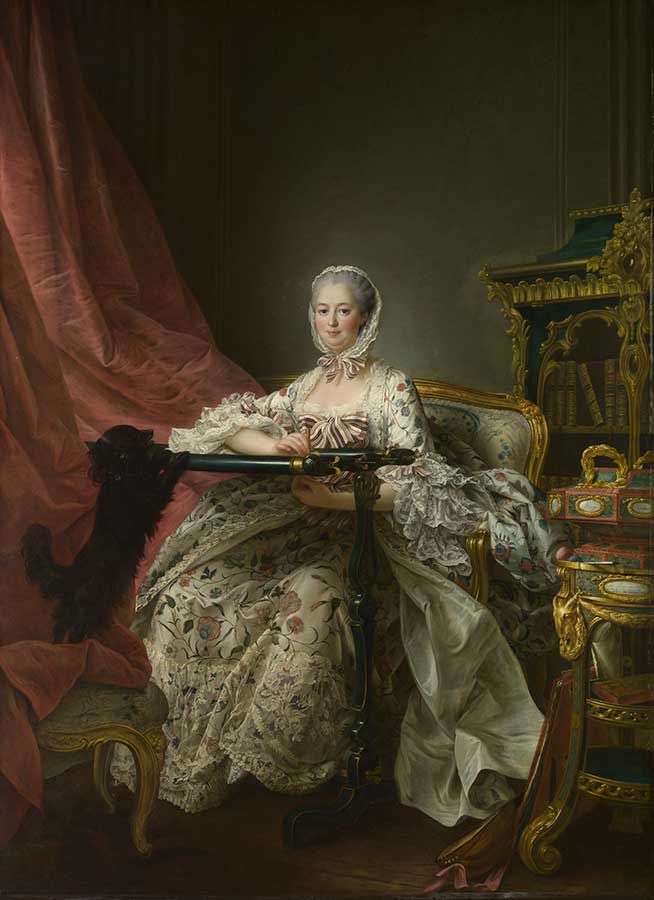Official portraits
Madame de Pompadour turned to the artist Maurice Quentin de La Tour after his rise to fame with the success of his royal portraits at the Salon of 1748.
She enjoyed a privileged relationship with a number of artists. Keen to pay her homage, her portraitists excelled themselves.
- Madame de Pompadour paid great attention to the circulation of her image. Her first official portrait, painted by Nattier at Fontainebleau in 1746, depicted her with the attributes of Diana, the goddess of hunting.
Jeanne-Antoinette Poisson, Marquise de Pompadour, Jean-Marc Nattier, Versailles, Musée National des Châteaux de Versailles et de Trianon
- The first portrait bust of Madame de Pompadour was probably the one by Jean-Baptiste Pigalle. The Marquise is depicted with a gentle smile that shows the famous dimples in her cheeks. The finely carved lace placed delicately around her bust leaves one breast uncovered. This masterpiece in marble earned the artist further commissions from the king’s mistress. It is probably the most true-to-life portrait of the Marquise de Pompadour.
Madame de Pompadour, Jean-Baptiste Pigalle, New York, The Metropolitan Museum of Art
- In this famous portrait of the Marquise wearing a green gown, Boucher depicts her in the intimate setting of her richly furnished study. Seated in a nonchalant pose with a languid, dreamy expression, she wears a green sack-back gown sprinkled with bows and roses. The painting was given pride of place at the Salon of 1757.
Madame de Pompadour in a Green Gown, François Boucher, Munich, Bayerische Staatsgemäldesammlungen, Alte Pinakothek
- Madame de Pompadour requested an official portrait from both François Boucher and Maurice Quentin de La Tour at the same time. This sketch by François Boucher shows her in the privacy of her home, with one hand on the clavichord she liked to play. A second sketch depicts her in the same pose, but with her hand on a vanity table. She had deliberately decided against the traditional, full-length official portrait.
Madame de Pompadour with her Hand Resting on a Harpsichord Keyboard, François Boucher, Paris, Musée du Louvre
- Carle van Loo portrayed her as a sultana, reflecting her fascination for the Orient.
The Sultana Drinking Coffee, Carle Vanloo, Saint Petersburg, The State Hermitage Museum
- Van Loo wanted his work to represent the sitter’s true appearance. His painting reflects the return to nature, a movement that was greatly popularized in the eighteenth century by the “pastoral” literary genre.
"Belle Jardinière" portrait of the Marquise de Pompadour, Carle Vanloo, Versailles, Musée National des Châteaux de Versailles et de Trianon
- Drouais depicted the Marquise working at her embroidery in 1763, a year before her death at the age of forty-three. Portraits of women embroidering were common in the eighteenth century, when the tapestry frame was seen as a symbol of virtue.
Madame de Pompadour at her Tambour Frame, François-Hubert Drouais, Londres, The National Gallery
